#necker's cube
Explore tagged Tumblr posts
Text


double bwomp/peace stripe-inversion style: GO!
#me#trans#transfemme#transfem#oh hey look my apartment interior kinda has a necker-cube type illusion to it#anyway...
32 notes
·
View notes
Text

#androgyne#transgender#andrógine#andróginx#trans#nonbinary#gender symbols#no binarie#androginia#androgynous#flags#género#gender#pride month#arca#símbolos#bandera#transgénero#transexual#transsexual#triangles#necker cube#practical androgyny#the kybalion
29 notes
·
View notes
Text
I Saw The Light
One of my greatest failures in life turned out to be one of my greatest achievements. It was during my first semester in college, pursuing my love for the ocean and my goal of becoming a Marine Biologist, that I signed up for a course called Ecology. I thought it would be a breeze compared to my other courses; after all, it was just about littering and such, Right? However, on the first day of…

View On WordPress
2 notes
·
View notes
Photo
practicalandrogyny:
PracticalAndrogyny.com explains why the Necker Cube is the perfect symbol for androgynous gender presentation:
The Necker Cube is symbolic of the androgynous individual’s physical ambiguity. Regardless of whether we identify our genders in the terms of a gender continuum, as being without gender or as being something else entirely, the Necker Cube symbolises the ambiguity we present to a world that is primed to see all people as one of two binary options. Androgynous people can be taken as female, male or as something else entirely but, like the Necker Cube, our ambiguity invites those who interact with us to question what they see, and perhaps strive to see the true picture.
Read more at PracticalAndrogyny.com

#androgyny#androgynous#symbol#necker cube#optical illusion#ambiguity#genderqueer#trans#transgender#non binary#abinary#gender symbol#androgyne#gender presentation#gender expression
151 notes
·
View notes
Text
EXO and the CUBE •
There are multiple times we see the symbolism of the Cube in Exo's mvs. Things you (maybe) didn't notice:-
-We find it first appears as a box given to Kyungsoo in Overdose intro (Overdose theory!) as they are trapped in a maze. He sees a vision and empties the sand in it.
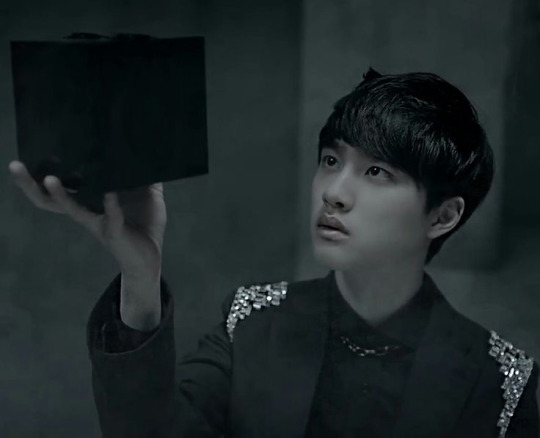
-A surprising link I found was in Obsession's concept photos. (Obsession Theory!) I noticed that Baek and Suho stand in and out of a cube literally made of glass & light:
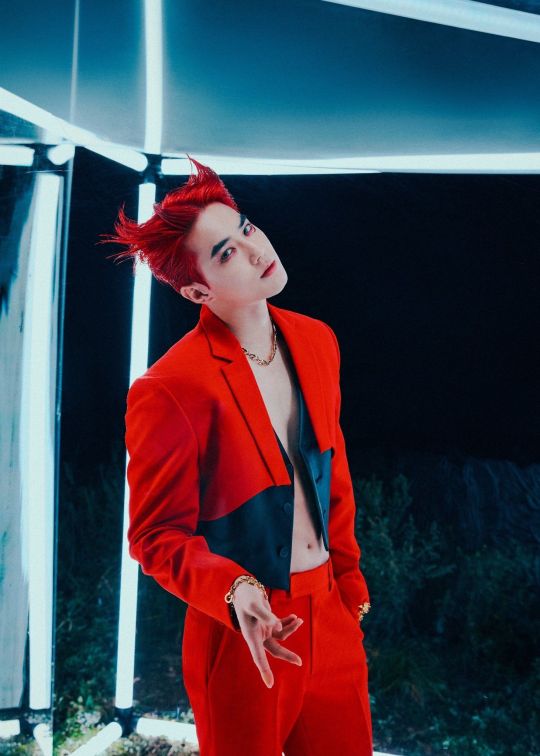
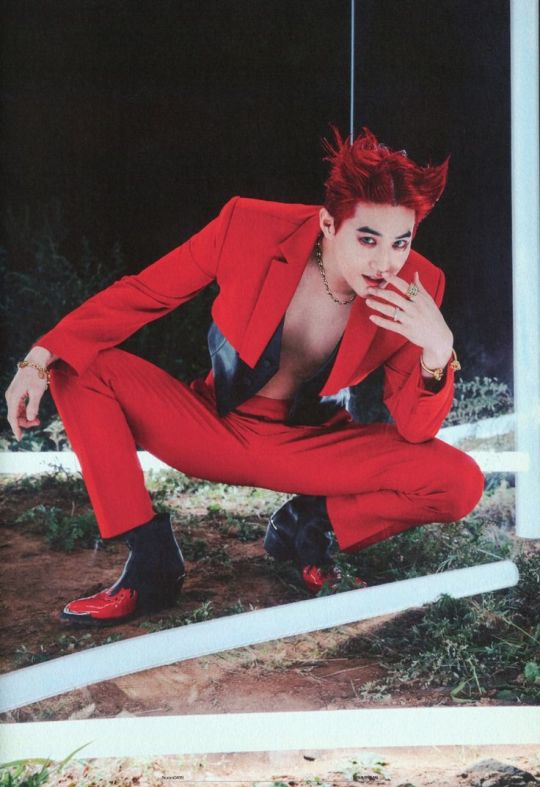


-Tempo is wholly based on this cube and SM further makes things complicated for EXO-Ls 👻. Notice the white text at the bottom of this teaser image:

They solve the puzzles in different rooms which are in the bigger "cube": Jongdae+Chanyeol📝, Ksoo+Xiu♟️, Kai🎹 / Sehun🥂 / Jongdae in the bar, Baek+Suho💡 in the room with a bed (another cube imagery!)
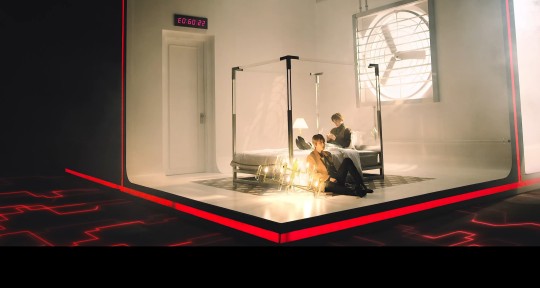
The image below clears all doubts that the 🟥 is nothing but the maze we see in Overdose and Lucky one. (Lucky One theory!)
Another smaller red cube is seen at the very centre of the maze. I'll talk more about this in a different post dedicated to Tempo.

-Notice how the logo of EXODUS (theory) - 2nd album is awfully similar to the Necker cube which appears in Don't Mess Up My Tempo Album:


The lyrics of Exodus can be interpreted in two ways 1) they are in a maze in that era 2) this was the past and they escaped it:
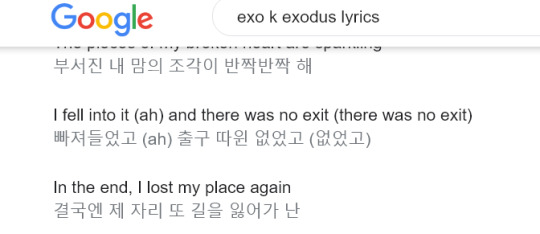
I'm still trying to understand the concept of the best kpop group♡. Thank you for reading and have a nice day ;)
#exo#exo m#exo k#exo kpop#kpop#sm entertainment#exo cbx#Exo sc#sehun#chanyeol#suho#junmyeon#baekhyun#exo kai#jongin#jongdae#chen#lay zhang#minseok#xiumin#kyungsoo#exo do#tempo#Don't mess up my tempo#exo theory
28 notes
·
View notes
Text
Lots of anger directed at people who prefer a darker doctor who lately. “It’s a show for kids why are you ruining it” to that I say I’m sorry that my psychic abilities are so much stronger than yours. Doctor who in my mind is both a stupid cheesy show for little babies and a Shakespearean tragedy of epic proportions simultaneously. The doctors morality is in something similar to a state of quantum superposition. I see both sides of the necker cube at once. I shoot lasers from my brain
#warlock wartalks#is the doctor a good person a bad person etc etc if you saw how I saw the doctors interior life you’d expose#*explode
20 notes
·
View notes
Text
Fuck It, love Necker cube
(For reference: it's the weird cube that can't physically be a 3D object)

enough talk about love triangles and love squares and love rhombuses.... this is how i win
387 notes
·
View notes
Text
In honor of Gracchus Babeuf's birthday, here’s a not-so-serious take: What if Gracchus had been on the Committee of Public Safety during Year II?
If you’re looking for a historical opinion, move on. This is not a serious post at all.
It would have been incredibly complicated. He would have arrived at the Committee like an overenthusiastic puppy, greeting everyone (except maybe Barère), and immediately spent his first day writing about how he's the humble and grateful "point of the revolution" (I've read some of his letters from the time he first arrived in Paris, and he was basically like a kid on Christmas morning, meeting so many important people). Known for his feverish passion for the revolution (I'm only half-joking, the man couldn't sit still sometimes—probably had caffeine running through his veins instead of blood), he would have talked non-stop about redistributing property, particularly focusing on the agrarian front, until the rest of the committee members would have been this close to just throwing him out the window (especially because he can't sit still in his chair) . In fact, they’d probably have had to remind him to calm down, like a hyperactive toddler who's had one too many sugar cubes.
To keep the peace, the Committee might have sent him on a mission to Picardy, where he was very popular. Besides, Babeuf always sought to understand the origins of economic problems, so he could have been effective in that regard. Lindet might have been pleased to have him there, even if they didn’t always agree. He could have been an ally of Lindet, given that they had once allied, even though Lindet didn’t take part in the conspiracy. The only common ground he might have had with Carnot would have been on women’s rights, but otherwise, not much (considering what happened in real life, the difference being that Lazare, as Director, might have hesitated to spearhead the repression of the Babouvists, perhaps because he knew Babeuf better, though that’s a big maybe).
His strongest asset would have been his closeness to the Marat family (especially Albertine Marat and Simone Evrard). He could have united both Robespierrists and Hébertists, as well as people like Lindet, even from a distance. This would have been a positive for the Committee. He was upright, honest, hard-working, and willing to risk his life and comfort (he only experienced 16 to 20 months of freedom during the Directory, so he was a true fighter, ready to give his life). From a family perspective, things might have been a little better. He wouldn’t have taken advantage of his position, but at least he could have fed his daughter Sophie, who might not have died of malnutrition.
He was much smarter than he appeared and wasn’t a utopian or a fool. For example, while Marat, brilliant as he was, constantly attacked Necker (justifiably), Babeuf would have tried to think beyond that, supporting tax measures, stable prices, and investigating the grain market. He would have wanted to understand why it wasn’t reaching Paris and would have volunteered to investigate. I can also see him declaring war on the black market and speculation.
In any case, Gracchus is a humanist who does not tolerate the slightest misconduct, even in the name of the revolution. This is demonstrated by his reaction to the assassination of Foulon and his response in Vendée, despite being a fervent revolutionary. I can imagine him reading the reports from Vendée, enraged, demanding that Carrier be severely punished, as well as Collot d'Herbois, when he learns that Collot used cannons for executions in Lyon. This would cause turmoil within the Committee (particularly for Collot d'Herbois). In this situation, Gracchus would immediately see Fouché's true nature, but he might innocently propose to the Committee of Public Safety (CPS) that Tallien be included, which would likely give Carnot, Robespierre, and others heart attacks. However, Gracchus would soon realize Tallien’s true character and withdraw his proposal.
A major point of divergence would arise during the struggle between factions, with both the factions and the CPS, as well as the Convention, all bearing some responsibility. On one side, Gracchus is closer to the Hébertists (some, like Chaumette) than to Collot d'Herbois, so he might try to calm them down. On the other hand, Chaumette did not participate in the insurrection attempt and withdrew, not out of cowardice or opportunism like Hébert—though the term may be harsh—but because he was more reasonable than many believed, despite his flaws, which didn’t prevent him from being guillotined. Thus, Gracchus would fiercely oppose the Committee, doing everything he could to avoid signing, especially for Chaumette. On the other hand, he would refuse any parody of justice, including that of the Indulgents, because he is a humanist and a reasonable person, and he would protest even more strongly the execution of Lucile Desmoulins and Marie-Françoise Hébert.
He might be expelled after delivering a speech that the Committee mishandled, publicly distancing himself from them. If he remains, I see him reluctantly forgiving them for what happened, because he understands that the CPS is being run by people crushed in an infernal machine, while still refusing to abandon his friends. After all, Babeuf supported Chaumette’s widow and, posthumously, reconciled with Robespierre. There is also a theory that explains why he spared a lot Carnot in his final speech, even though Carnot had been a key figure in his execution and contributed to his arrest, which ultimately led to his death. Despite knowing what Carnot had done against him, Babeuf often criticized people like Fréron, Tallien, Fouché, and Barras. However, he recognized that, for all his flaws, Carnot was more sincere than they were in safeguarding the Republic.
A minor drawback is that his wife (his political right-hand) can no longer spend as much time as a collaborator. Therefore, he would have a trusted friend manage his newspaper, while his wife would handle subscriptions, militating separately, assisting him, and accompanying him on missions.
However, it is very likely that he would eventually be deported. His wife, known for her strong character given all the trials she went through and her continued activism, would seek to escape with him, but if not, she would join him. She possesses incredibly terrifying courage, as evidenced by the many posts I have written about her. If he survives, he would continue his activism to the fullest, and perhaps he would even help inspire a larger uprising among the Black population, knowing him.
But here comes the biggest black mark, according to Pierre Serna: during his arrest, Babeuf was negligent and irresponsible, leaving a list of many people, whether conspirators or not, who were linked to him in his room. This made it very easy for the police to find everyone. So, imagine this: if he were in the CPS, went on a mission, and left secret documents unprotected (which is very possible, knowing him). An enemy or spy could have gained access to sensitive information or strategic plans. Imagine the faces of the other members of the CPS if it would have happened. Carnot would be shouting in his face, asking just how irresponsible he could be (a nice euphemism there), and how Gracchus seemed determined to ruin all their efforts. Maybe Carnot would even have a heart attack from the sheer foolishness of it all (RIP Carnot, but, hey, he survived Tallien and Barras, so maybe he would’ve survived this too... or maybe not). Billaud and Collot would exchange glances and say, “Well, it’s two against one. Let’s just get rid of him.” Prieur Claude-Antoine would do the most epic facepalm ever seen, probably with a loud sigh of frustration . Robespierre, on the other hand, would try to calm himself down by reading Rousseau, hoping to lower his blood pressure, but of course, that wouldn't work at all. His condition would get worse, and Momoro, would jump at the chance to mock Robespierre even more if he know about this (especially after hearing his speech about the tired revolutionaries and their broken legs). Couthon, trying to keep his cool, would attempt to write the Civil Code but would likely fail miserably (you can just imagine him scribbling down nonsense).
Saint-Just would also make the same reproach he made to Carnot in the movie Saint-Just et la Force des Choses (when, in the film, Saint-Just confronts Carnot over the Battle of Fleurus), telling him with great severity that, from another person, he would suspect a betrayal . In fact, he would be even harsher with Gracchus for making such a blunder that it would probably make the walls of the room shake. In any case, the CPS would no longer trust him with delicate missions. However, it would be interesting to see the aftermath with Buonarroti, who would need to join the CPS to channel his friend Gracchus.
#frev#french revolution#babeuf#not a serious post#what if#don't worry Babeuf you are on my top 5 characters#that why I really like you :)
11 notes
·
View notes
Text
The Necker Cube: a symbol for the androgyne community

The Necker cube is a bidimensional optical illusion first published in 1832 by Louis Albert Necker. It's particular because the person who observes this cube has no clue of the "real" direction of the image, as it can be both concave and convex based on how you look at it, giving us a multistable perception of it.
Cameron Reed in 1996 has first proposed the Necker Cube as a symbol for the androgyne community, since the ambiguity of this cube can be found in androgyny (physical, mental, or both).
BIBLIOGRAPHY
What is the necker cube:
https://en.m.wikipedia.org/wiki/Necker_cube
A symbol for the androgyne community:
Who is Cameron Reed:
https://en.m.wikipedia.org/wiki/Cameron_Reed
#AndrogyneCultureIs#androgyne#androgyny#androgynous#androgyne pride#history#community#lgbtq community#lgbt#lgbtq#lgbtqia+#transgender#nonbinary#bigender#genderfluid#gender presentation#gender expression#gender euphoria#gender identity#gender nonconforming#gender noncomformity#neckercube#cameronreed
31 notes
·
View notes
Text

In a discussion about consciousness on Mastodon, I noted that consciousness is a state, not a quality. That's important, when we talk about whether or not entities (whether they be human-shaped or AI-shaped) as having "consciousness" and "self-awareness". Mikeydangerous asked a really important question that's been bothering me for a while when looking at myself: ... how would you define the difference between understanding and pattern prediction in relation to consciousness? That's how AI generates the intelligent-sounding platitudes it does. It sees the context of those sentiments in enormous sets of data and builds it from there with no real understanding or creativity. At best, it's scaled-beyond-human capability pattern matching. At worst, it's scaled-beyond-human capability plagiarism. Because that's where Descartes falls down, isn't it? Right, quick recap. Descartes, while writing to convince the Roman Catholic Church that science isn't inherently heresy, tries to find some kind of rock-solid truth, some certainty that he can build from. It's from this that we get "I think, therefore I am;" Descartes states that since there is a point of view, that point of view must exist. He then immediately jumps straight to "my senses must be accurate, because God wouldn't be mean like that," which we now know is absolutely not the case at all. Our senses are fickle, easily fooled, and prone to error. That's important because while there are visual tests (Necker Cube, the mirror test, the one I suggested) that may correlate with being conscious, they could also simply be artifacts due to the makeup of our sensory "hardware" and the ways our brains process visual information rather than being a sign of consciousness in ourselves and others. So let's ignore that, and go back to Descarte's central thesis: I think, therefore I know that I am. Given what we know about consciousness, as MD points out, how do you tell the difference between being conscious and being a sophisticated pattern-matching machine? How do you know that any entity -- including yourself -- is not a philosophical zombie? Before someone says it, no, art is not some safe haven of consciousness. We are only able to "tell" the difference between AI generated "art" and the work of inspired humans only by the errors it makes or its repetitive nature. Once again, it's a processing and fidelity issue, not some special quality only possessed by consciousness. (Wait with your objections, folks.) That idea becomes a lot more immediate and real when you've had the fact that there are non-conscious (semi?) autonomous routines that are capable of moving your body around and interacting with the environment without bothering to inform your consciousness. 1 And unlike Descartes, we know that our senses are inaccurate and betray us -- not only in terms of effects too small for us to typically notice (such as the relativistic effects of when you tap your toes to a catchy song), but because even if we accept that emotions are something more than just biochemical reactions, those biochemical reactions do occur. But that's where our philosophical zombies come to the rescue, in a way. Or rather, testing for them. Remember, all of the ways -- fictional or real -- that we've tried to come up with for testing for consciousness are really tests of processing speed and fidelity. Even the visual tests could be artifacts of our biology. Except the ability to incorporate a new paradigm -- not just regurgitate it, but comprehend it -- is beyond the ability of a pattern-recognition system. Therefore, it is not "I think, therefore I am." It is, instead, "I comprehend, therefore I am." So back to art. The process of art seems to fulfill this test perfectly; it is synthesis and transformation, which require exactly the kind of comprehension that I'm talking about here. However, the production of art is not sufficient. In an situation reminiscent of Mead's philosophy about consciousness
and mind, the interaction between art and viewer is separate from the process of its creation. (This definitely applies to written works; I know from personal experience talking to people who have read mine.) In some ways, the artistic process is a perfect example of both the utility and philosophical frivolity of this whole thought experiment. You can demonstrate that you exist and are conscious through the creation (or transformative appreciation) of art, but you cannot extend that to any other entity. And as a practical matter, testing for the kind of synthesis and comprehension I'm talking about would be difficult (except when large groups of people self-own themselves). And we haven't even touched on some of the implications about humans; I'll just point out that when it comes to children, babies fail the mirror test until about age two, and in some ways they're operating on the level of rats until five or six years of age. 2 As a practical matter? I don't know that it's going to ever be easily determinable whether or not an entity is conscious -- or rather, that they are capable of a self-aware consciousness, let alone if that is their default state. But, having extended Descartes' argument sufficiently to handle my own existential question about whether or not I exist, I'm no longer entirely sure it's the right question to ask. PS: Yes, the title is a programming/philosophy joke. It made me laugh. 1 This becomes an even more fraught question when you start talking about multiples and systems, as some people with DID experience it. 2 From this Radiolab episode, relevant portion of the transcript clipped here. Featured Image by [email protected] from Pixabay https://ideatrash.net/2024/11/meditations-on-zeroth-philosophy.html?feed_id=487&_unique_id=6738e27b46199
2 notes
·
View notes
Video
tumblr
The Boltzmann Machine: Necker Cube Example Feb 1996 Archived Web Page 🧩
0 notes
Text

Subjective Necker cube, DR. Bradley, ST. Dumajs, HM. Petry, Nature, 261, Macmillan Journals© 1976
0 notes
Text
Unlocking the Wonders of Visual Perception: Exploring Optical Illusions

Do you believe your eyes? Well, sometimes they can play tricks on you! Optical illusions are captivating phenomena that challenge our perception and reveal the intricate ways our brain processes visual information. In this article, we’ll delve into the fascinating world of optical illusions, unraveling their secrets and understanding the science behind them. Introduction Optical illusions are captivating visual puzzles that showcase the complex interaction between our eyes and our brain. From making static images appear in motion to perceiving color where there is none, these illusions offer a glimpse into the remarkable way our minds interpret the world around us.
What Are Optical Illusions? Optical illusions are images that deceive our visual system, causing us to perceive something different from reality. They exploit the brain’s tendency to make assumptions and fill in gaps when processing visual information. In essence, this highlight the disparity between what we see and what actually exists.

The Role of Perception Perception is a key player in the world of optical illusions. Our brain often takes shortcuts to quickly interpret our surroundings, but these shortcuts can lead to misinterpretations. These illusions capitalize on the brain’s habits, leading us to see what isn’t actually there.
Types of Optical Illusions Geometrical Illusions Geometrical illusions manipulate our sense of size, length, and orientation. They trick us into seeing shapes and patterns that seem distorted or disproportionate.
Ambiguous Illusions Ambiguous illusions present images that can be interpreted in multiple ways. This ambiguity causes our brain to flip between different interpretations.

Motion Illusions Motion illusions create a sense of movement in static images. They challenge our brain to perceive motion where there is none.
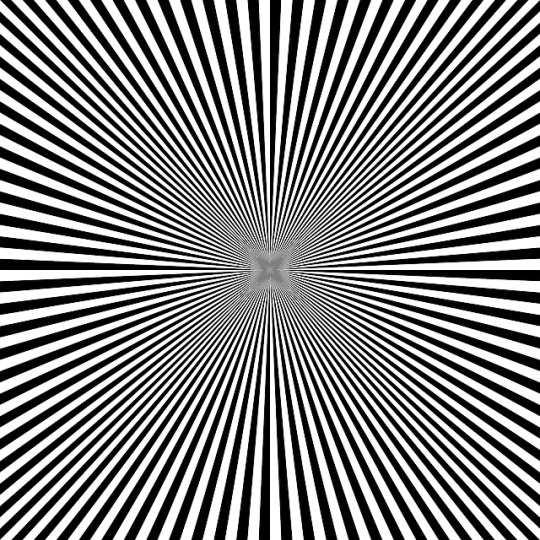
Color Illusions Color illusions exploit the way our brain perceives colors based on surrounding context. They can make us see colors that aren’t actually present.

The Science Behind the Illusion It occur due to the brain’s attempt to simplify the complex visual information it receives. Our brain relies on past experiences and assumptions to make quick judgments about what we’re seeing.
Perplexing the Brain: How Do They Work? This expose the disconnect between our visual perception and physical reality. By manipulating factors like contrast, brightness, and perspective, these illusions highlight the brain’s vulnerability to certain visual stimuli.
The Connection Between Illusions and Reality Despite their deceptive nature, optical illusions have a strong connection to reality. They demonstrate how our perception isn’t always an accurate representation of the world but is rather a construction of our brain’s interpretation.
Bursting the Illusion: Why Do We Fall for Them? Our brain’s predisposition to take shortcuts and make assumptions can lead us to fall for optical illusions. These illusions reveal the gap between our brain’s expectations and the actual visual input.
Famous Optical Illusions Throughout History From the classic Penrose triangle to the enigmatic Necker cube, history is brimming with optical illusions that have baffled and intrigued generations.
Creating Illusions: Art and Design Artists and designers often use optical illusions to play with viewers’ perceptions, creating captivating and thought-provoking pieces that challenge reality.
Practical Applications of Optical Illusions Beyond entertainment, optical illusions have practical uses. They can help scientists study the brain’s processes and aid in designing spaces that appear larger or more pleasing.
Can Illusions Trick Artificial Intelligence? Just like our brains, artificial intelligence can also be vulnerable to optical illusions, which has implications for fields like computer vision and autonomous driving.
Unveiling the Mystery: Can You Train Your Brain? Research suggests that with practice, our brains can become more resistant to certain illusions. Training our brain can reveal the secrets behind some of these captivating tricks.
The Impact of Illusions on Visual Arts It left an indelible mark on the world of visual arts, inspiring movements like Op Art and influencing renowned artists throughout history.
Conclusion In conclusion, optical illusions are windows into the complex relationship between our eyes and brain. They remind us that perception is a dynamic and often deceptive process, shaped by our past experiences and cognitive shortcuts. The next time you encounter an optical illusion, take a moment to appreciate the incredible interplay of perception and reality.
Explore the allure of eyewear fashion with our exclusive collection at Rebecca Optical. Discover frames that marry style and comfort, elevating your visual experience to a whole new level.”
Get your Appointment Now !
Secure your spot at:
for a personalized eyewear consultation and experience exceptional vision at its finest. Reserve your appointment now and embark on a journey towards stylish and clear sight.
0 notes
Text
Only 1% of the best geniuses can spot an eagle in the mountains in 6 seconds! - NEWSTARS Education
Optical illusions, those captivating visual phenomena, never fail to leave us both challenged and fascinated. These puzzling images or pictures have the power to captivate and deceive our minds, making us question our own perception and understanding of reality. From the famous "Rubin's vase" illusion to the mind-boggling "Necker cube," optical illusions have been a source of intrigue for centuries. They play with our brain's ability to interpret visual information, often presenting conflicting cues that trick our minds into perceiving something that isn't actually there. What makes optical illusions so fascinating is that they remind us of the limitations of our senses and the subjectivity of our perception. They show us that what we see is not always an accurate representation of reality. It is a powerful reminder that our brains are constantly processing information a - hqbe19sw1h
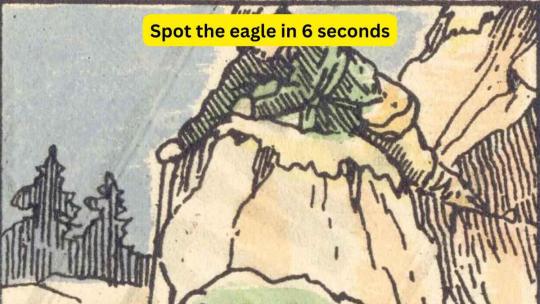
1 note
·
View note
Note
I'm wondering if you've kind of created a necker cube situation because I can flip-flop that bow mentally to be facing either with the wood against the stings or the hair against the strings.

(Definitely the Devil's instrument)
I really hate to be a bother, but the way you draw violins being played is a bit irksome. Just wanted to point out that in the latest comic, Holmes was playing with the wood on the neck of the instrument, instead of with the hairs between the bridge and neck. Again, sorry
sobs I quite literally traced reference for that panel because people always tell me I draw the violin playing wrong...devil's instrument that refuses to be captured in a drawing
181 notes
·
View notes
Text
I Can hold both views of a necker cube in my mind simultaneously actually
0 notes